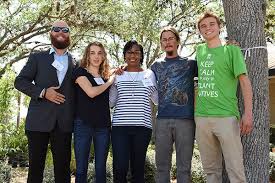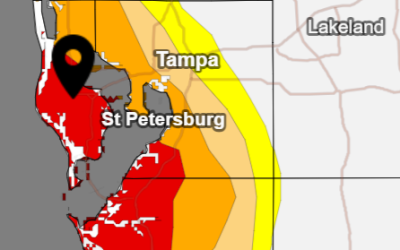The Coontie is real special because it is Florida’s only native cycad. Cycads are considered among the most ancient of all plants and are often referred to as living fossils. The cycad plant family is often confused with palms and ferns but they all have a central trunk topped with a whorl of leaves. But while ferns have spores and palms have flowers that graduate into seed fruit, cycads are Gymnosperm that produce cones. Coontie is a woody plant with a thick, soft stem that appears like a trunk but it is mostly made of storage tissue and negligible true wood tissue. The other thing that makes Coontie special is that it is the sole larval food for the Atala butterfly.
Coontie has historically been an important starch source to Native Americans and early settlers. The city of Ft. Lauderdale was given rise to thanks to an early industry around the harvest of Coontie.
Plant Specs And Use
This shrub with palm-like fronds grows very slowly to a compact size of 2-1/2 to 3 feet tall by 3 feet wide. It can easily grow in a wide range of soil, is drought-tolerant once established, and easily adapts to full sun or full shade. Coontie is cold-hardy, being able to withstand the lowest temperature of 30°F It is native to Florida, Cuba and the West Indies.
Native plant Cycad enthusiasts, gardeners and state park programs have introduced this specimen as landscape plant into parks and gardens throughout Florida. Its attractive foliage, tropical shaped silhouette offering the look and feel of palm and its rich dark green stiff leaves, makes it an excellent landscape plant, for formal or natural landscapes. It makes a great choice for creating screens, in a border, as a backdrop for tropical blooms or even in containers or bonsai.
Coontie Planting Instructions
They are slow growing and take five years to reach commercial size. It only produces two or four short new leaves only once the first year, but it will continue to flush and grow more leaves as the years roll. By the fourth or fifth year, it will flush once or twice each year.
Coontie can be planted throughout the year in sandy, well drained soil.
Pick a planting location with enough space for roots to spread and leaves to grow freely. It should adequately be away from building foundations, walls, or decks to avoid any growing foliage from causing any problems in the future. Coontie requires a space range of 4′ (1.2-1.8m) because by the fifth year, the space will be filled.
Hold the base of the plant to remove the plant from the container and tip it sideways. Rotate the container and tap the outside of the pot to loosen the plant from the pot. This loosens the soil and the plant pulls out smoothly from the pot. Remove any burlap fabric or string and wires around it.
Place the plant in the hole keeping the rootball higher than surrounding grade and fill in with soil till the base. Pack more soil around the root ball. Do not bury the rootball!
Water the plant well before adding a 2” (5cm) layer of mulch such as bark around the planting area. But make sure that the mulch only comes to the edge of the rootball to prevent any decay.
Keep water 2 times every week until established. For the first growing season a slow, one-hour trickle of water is ideal. Soak the ground thoroughly up to 8” during hot spells every few days. This works better in establishing a better drought-resistant plant than watering a little daily.
Established Coontie shrubs do not require fertilizer.
Pruning may rarely be needed to remove dead leaves or may be a good way to remove insects when infected with pests. If needed natural oils like neem or partin oil safely will control scale on Coontie.
For more information about Coontie plant care and if you are interested in buying, check out Wilcox Plant & Supplies Shop.



